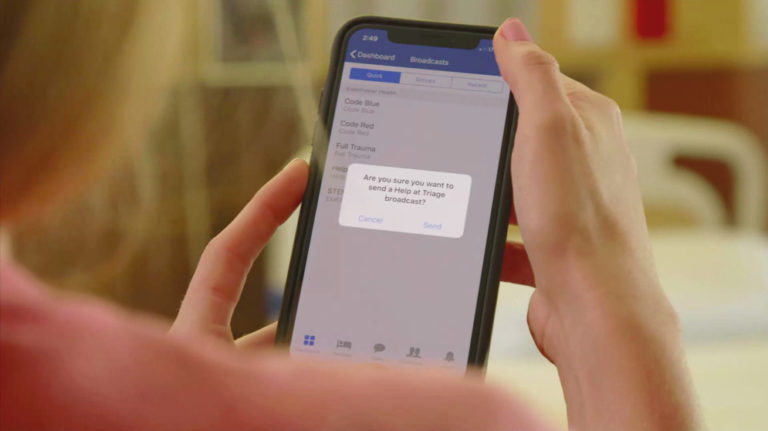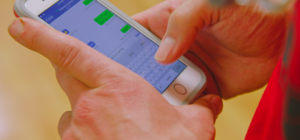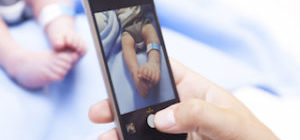Hospitals are a cacophony of noise—a sensory overload of beeps, buzzes, rings, alerts and sirens that too often, create alarm fatigue and a detrimental hit to a system’s Hospital Consumer Assessment of Healthcare Providers and Systems (HCAHPS) scores. Secure texting, like that within the MH-CURE® Platform, can streamline communications to help clinicians work together in a smarter way, without such a frenzy of sound or risk for medical errors.
But what happens when secure texting platforms are used incorrectly—and end up causing the very issues they seek to solve? Big problems, that’s what. Consider, for example, these texts:
- A message calling for intubation in room 36
- A special directive for morphine for a patient after surgery
- A back-and-forth exchange about the newest restaurant in town
You might think two of those three would be clinically appropriate for a text message, but in reality, they’re all classic examples of platform misuse. Some messages are simply too urgent or too important to send via secure text—while others aren’t important enough.
Finding the balance is tough, but necessary: The misuse of secure texting platforms can dampen the experience for all users, contributing to even more interruptions in an environment that’s already saturated with them. That’s why it’s essential for texters to follow a few guidelines so that everyone can make the most of their clinical communication and collaboration platform. These dos and don’ts can help:

Do Send a Secure Text When….
- …you need to send a clinical reminder. Non-urgent reminders—such as for a scheduled medication discontinuation or an upcoming patient transport—are good grounds for sending a text. Not only can teams collaborate with each other quickly, they can ensure all relevant clinicians are on the same page for the workflow ahead.
- …you’ve got a non-urgent question. Inquiries that don’t require a fast response—such as confirming a prescheduled radiology scan—are also suitable for secure texting. Make the most of every message by taking advantage of specialized features of MH-CURE, like using the Patient Pick and designating the Dynamic Role to customize messages with added context.
- …you’re sending a simple update. Courtesy messages that don’t require a follow-up or response are ideal for secure texting—such as informing a team member about a patient who is nearing their completion of fluids before administering anesthesia. The Quick Picks feature is a great way to customize and templatize those updates for easier delivery in the future.
- …you’re organizing non-clinical details. Hospital room relocations, supply closet restocking needs or other non-clinical details are all good message types to send over text because they can be delivered quickly, effectively and easily, with minimal interruptions involved.
Don’t Send a Secure Text When…
- …you’re sending a patient order. Directives for medications or other orders are better left to a phone call, just to ensure no details get omitted and that both clinicians can have an opportunity to fully ask and answer questions. In fact, the Centers for Medicare and Medicaid Services have prohibited the practice altogether.
- …the message is urgent. Send emergency messages, such as calls for intubation or codes, using a one-to-many broadcast feature, like the one on MH-CURE, rather than via text. This ensures that the message gets the priority treatment it deserves, and that it’s sent to relevant recipients unit- or hospital-wide so that they’re all aware of it.
- …the text will cause chaos. Messages sent with ambiguity, unclear directions or without a confirmed workflow are likely to cause chaos. Those communications are best left to a phone call so that everyone can share and receive added context. Or better yet, use MH-CURE’s video chat feature to get the benefit of visual gestures or cues you can’t get from audio alone.
- …it’s not work-related. Chatter about irrelevant things, like weekend plans or social events, is just an unnecessary distraction from the clinical tasks at hand. It can also clog the texting airways, putting more important texts at risk of getting overlooked. To make texting tools useful, reserve them for work-related communications and save the personal chats for the break room.
- …it’s not substantive. Like personal correspondence, messages devoid of any real substance—such as sending emojis—don’t add clinical value to the texting tool, so limit them when possible.
Smart and disciplined usage of any new platform takes time to understand—and to work out the individual kinks that are bound to pop up with hospital-wide deployment. Your organization may have additional guidelines or policies unique to your system, and if that’s the case, document them for all to see.
In addition to following hospital policy, though, users should employ common sense and consider the text from the recipient’s perspective: Would I understand the information conveyed in this message if I were to receive it? Is text the best way to communicate this—better than a phone call, video chat or broadcast?
Many times, the answer is yes. If it’s a no or an “I’m not sure,” it might be a good idea to explore other communication options. With MH-CURE—between talk, text, video, paging, image sharing, broadcast and more—there are plenty of them, and they’re all just a tap away.
See smart texting in action: Read how Yale New Haven Hospital used smartphone technology from Mobile Heartbeat to streamline its clinical communications. Get the case study.





